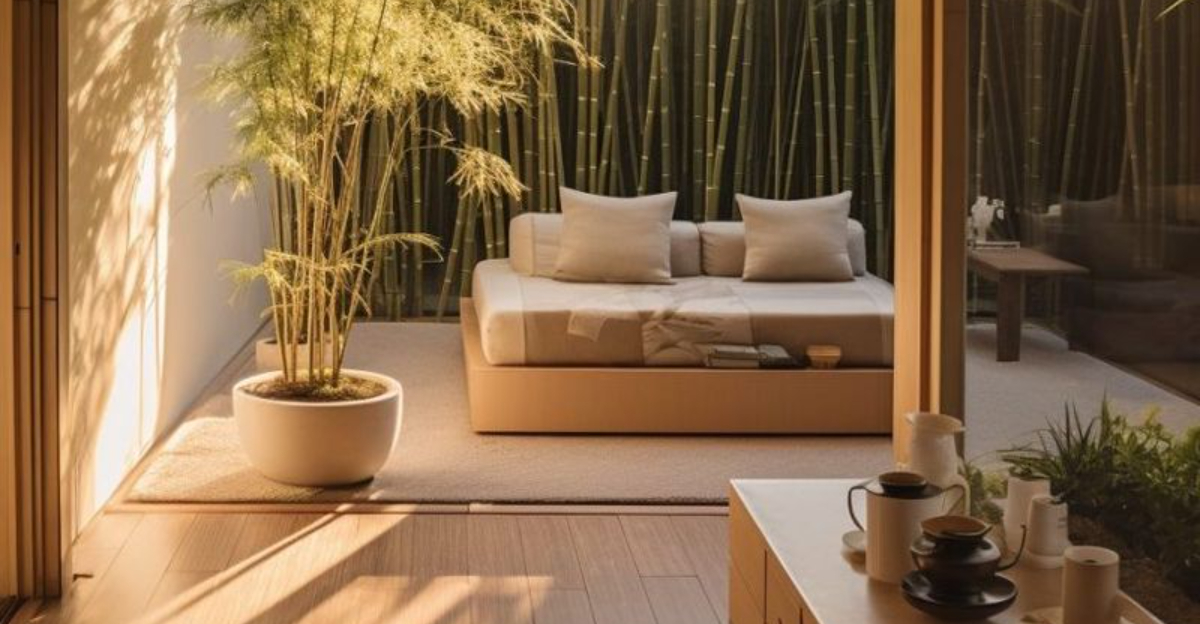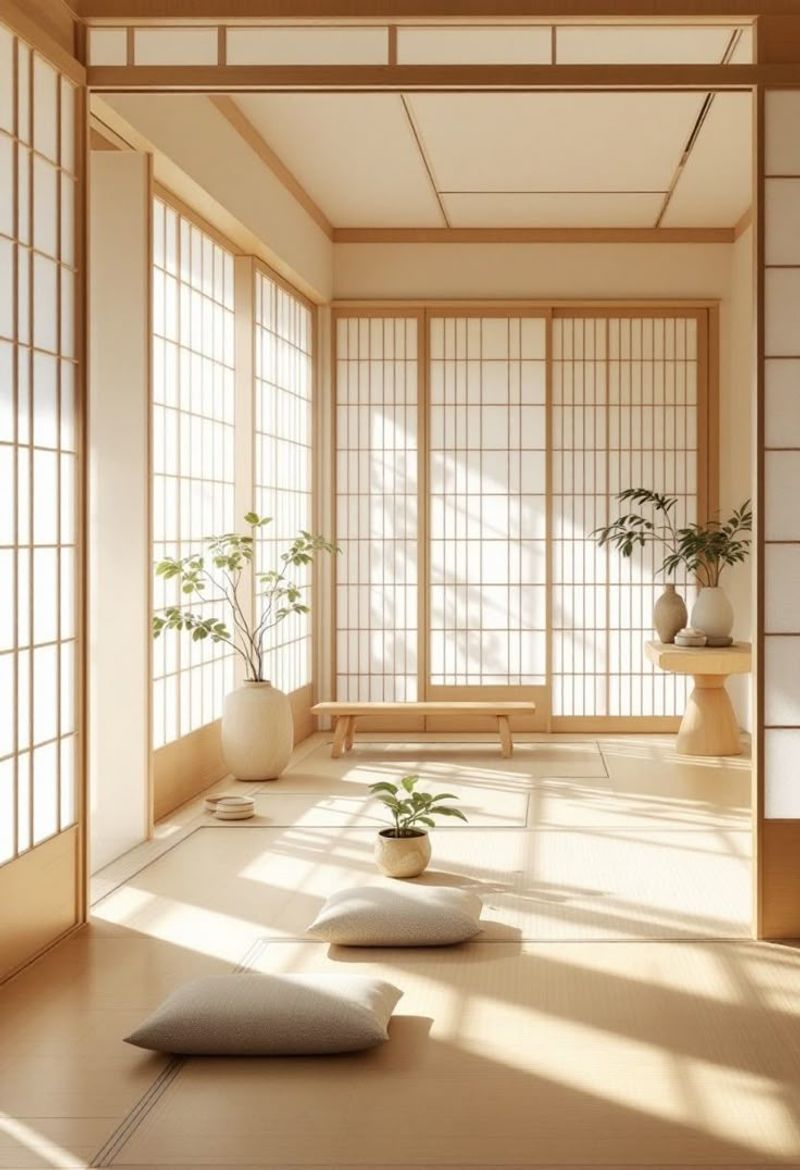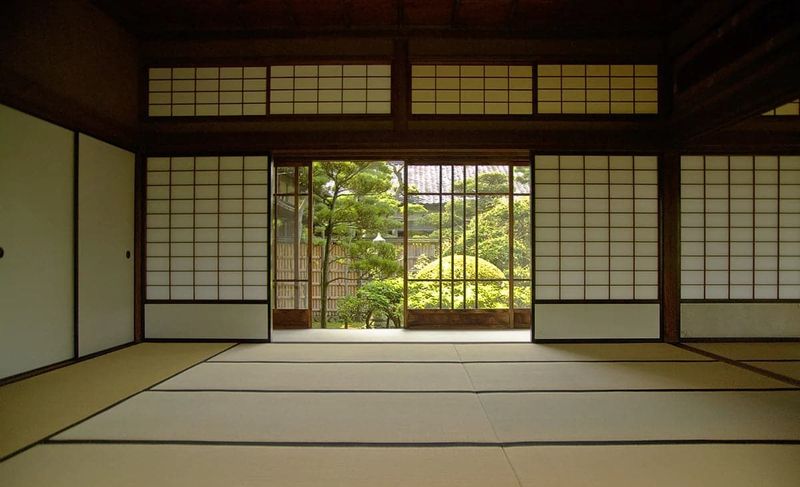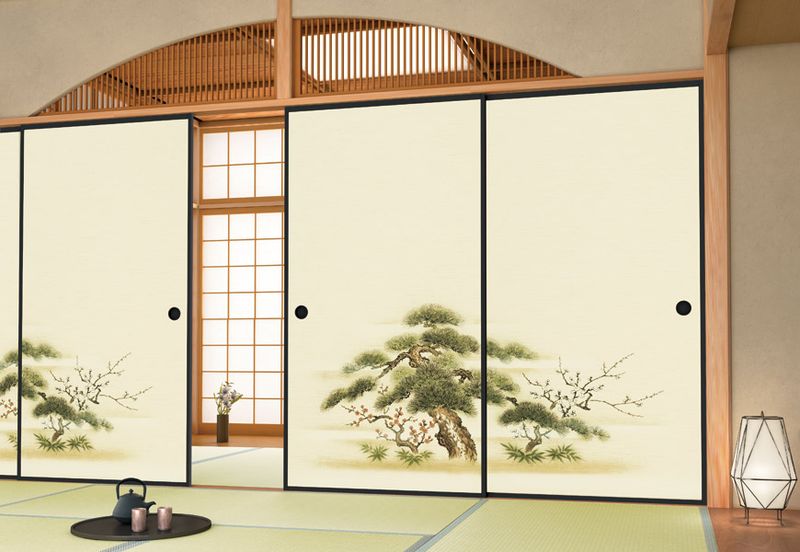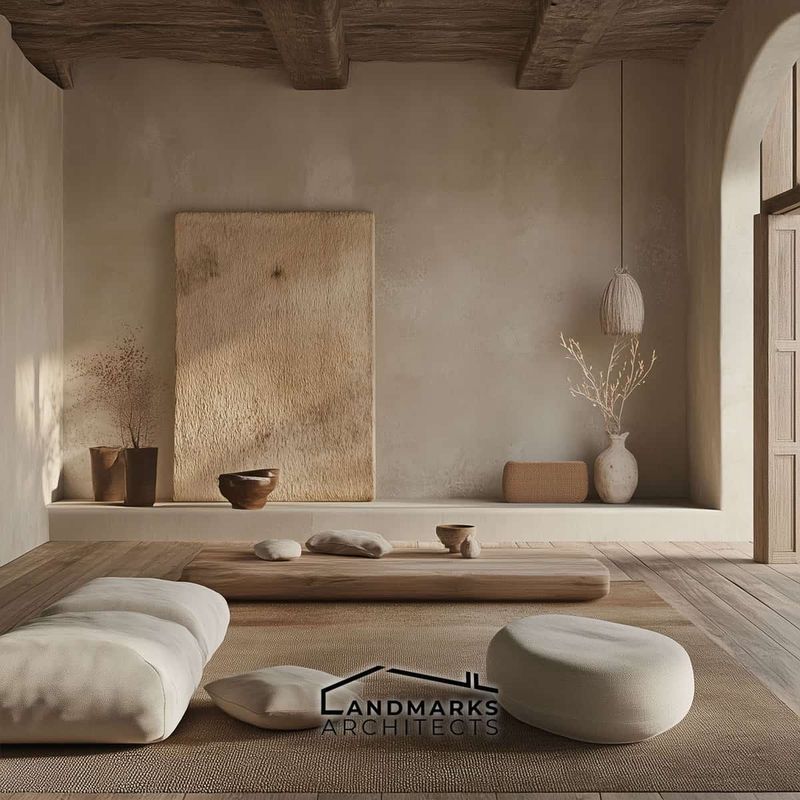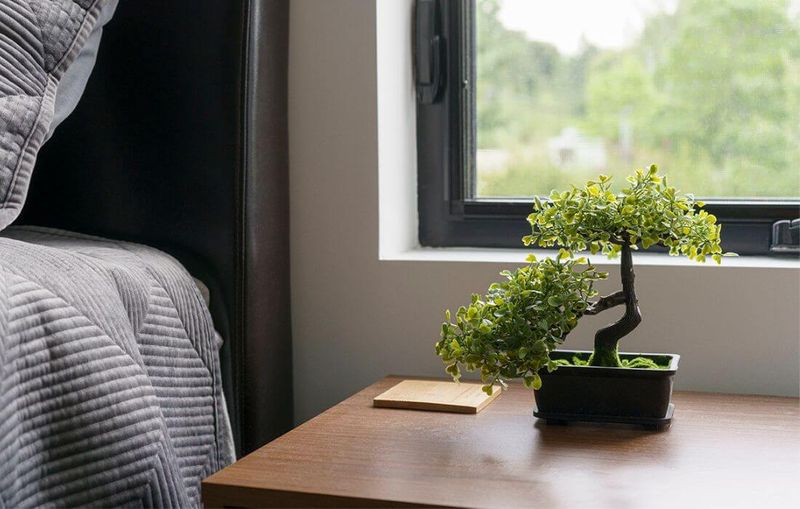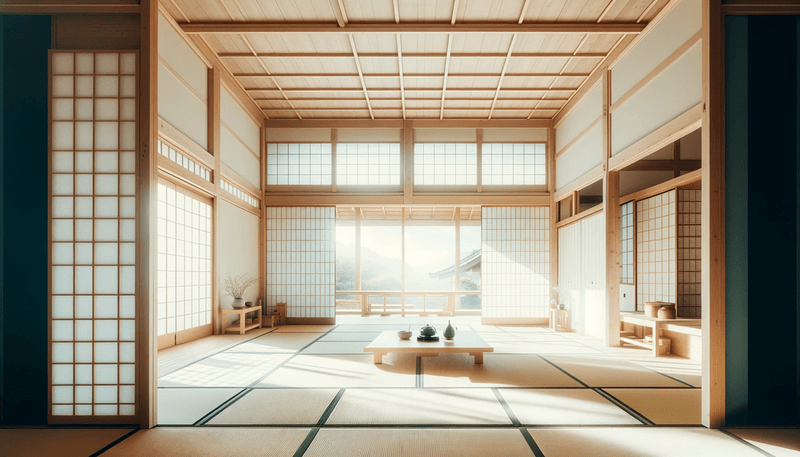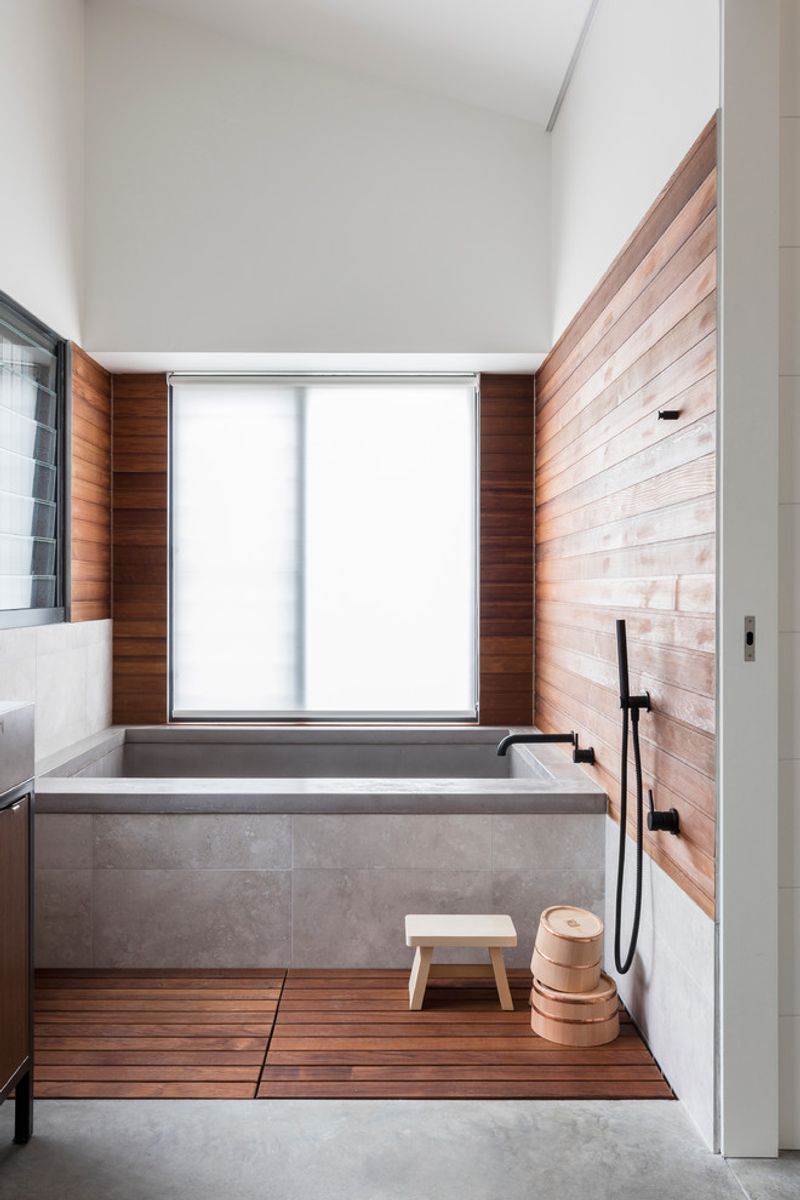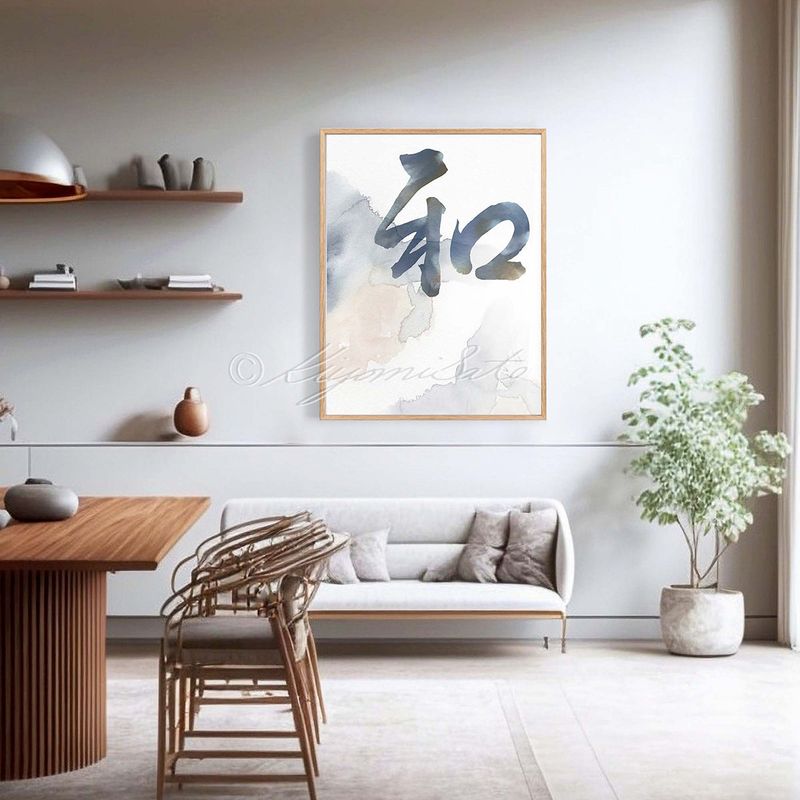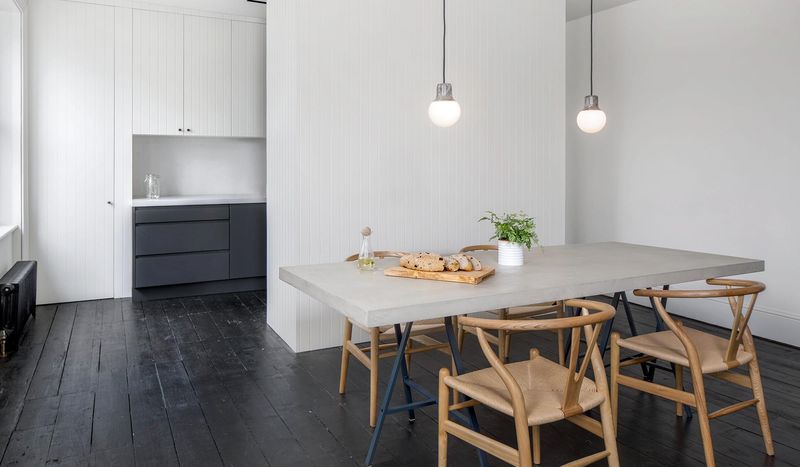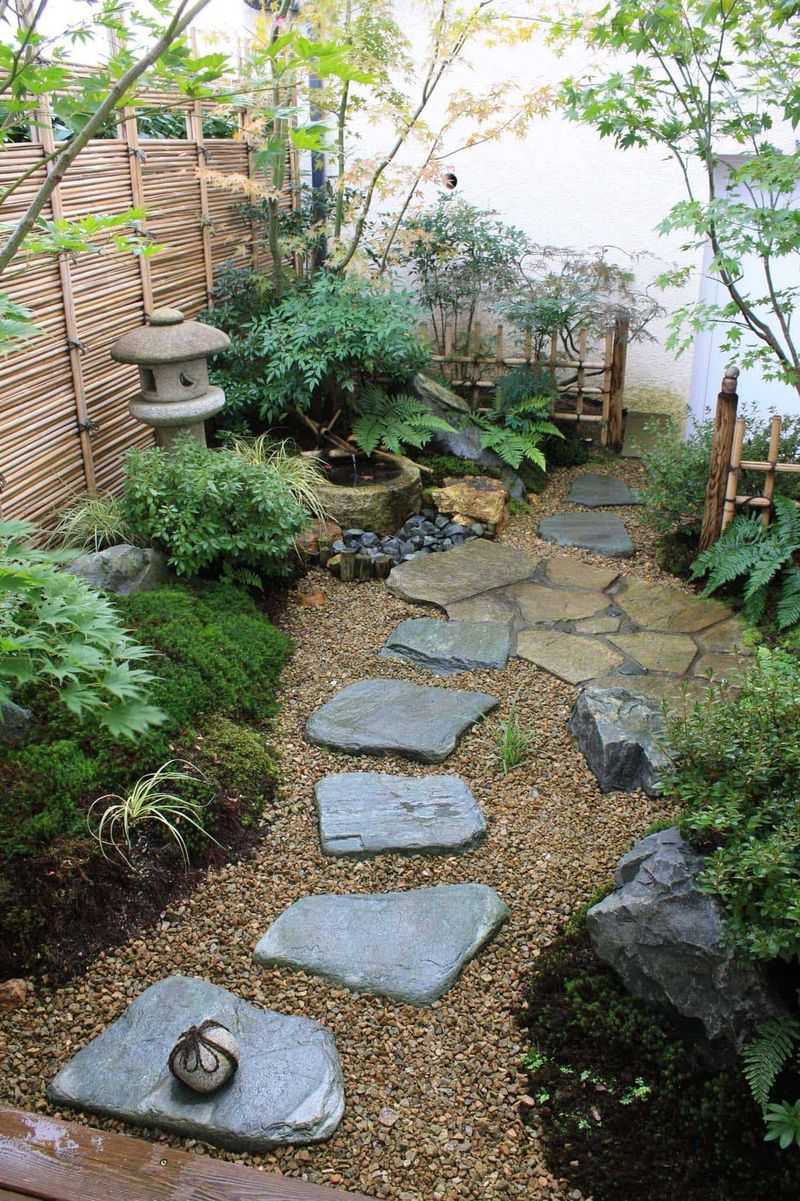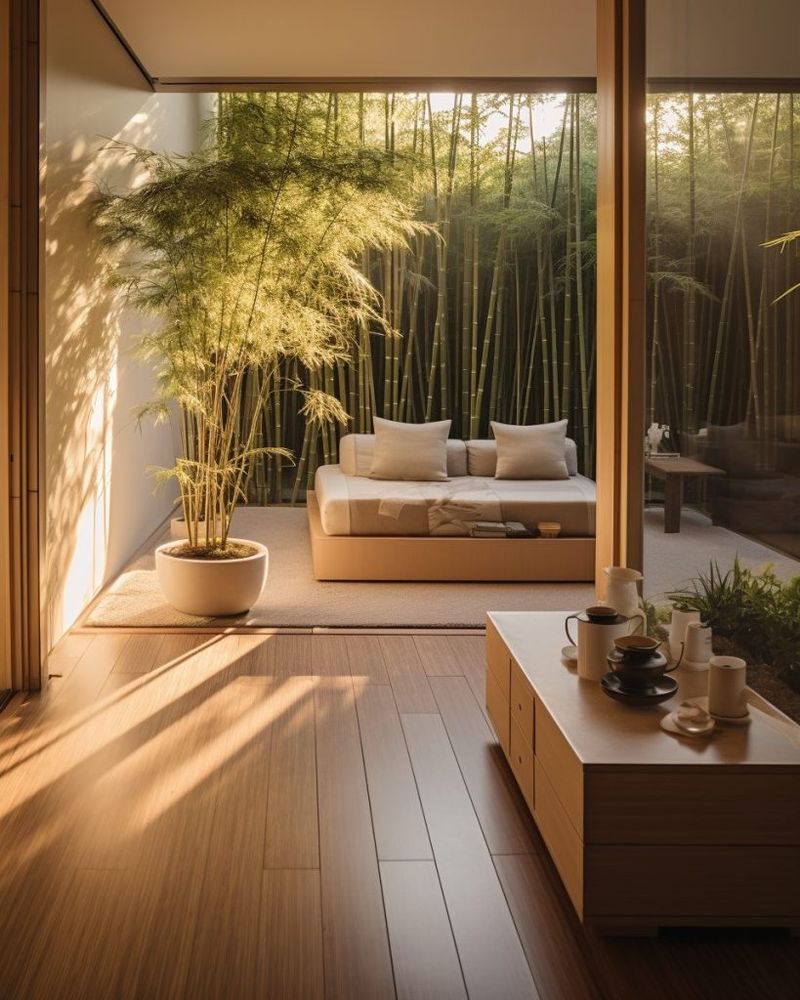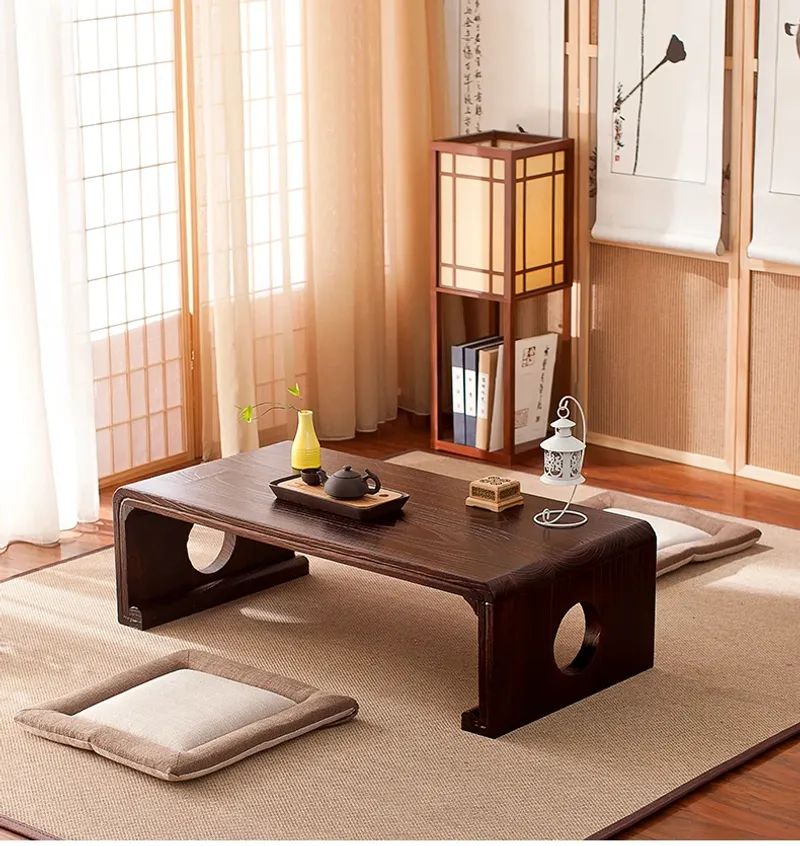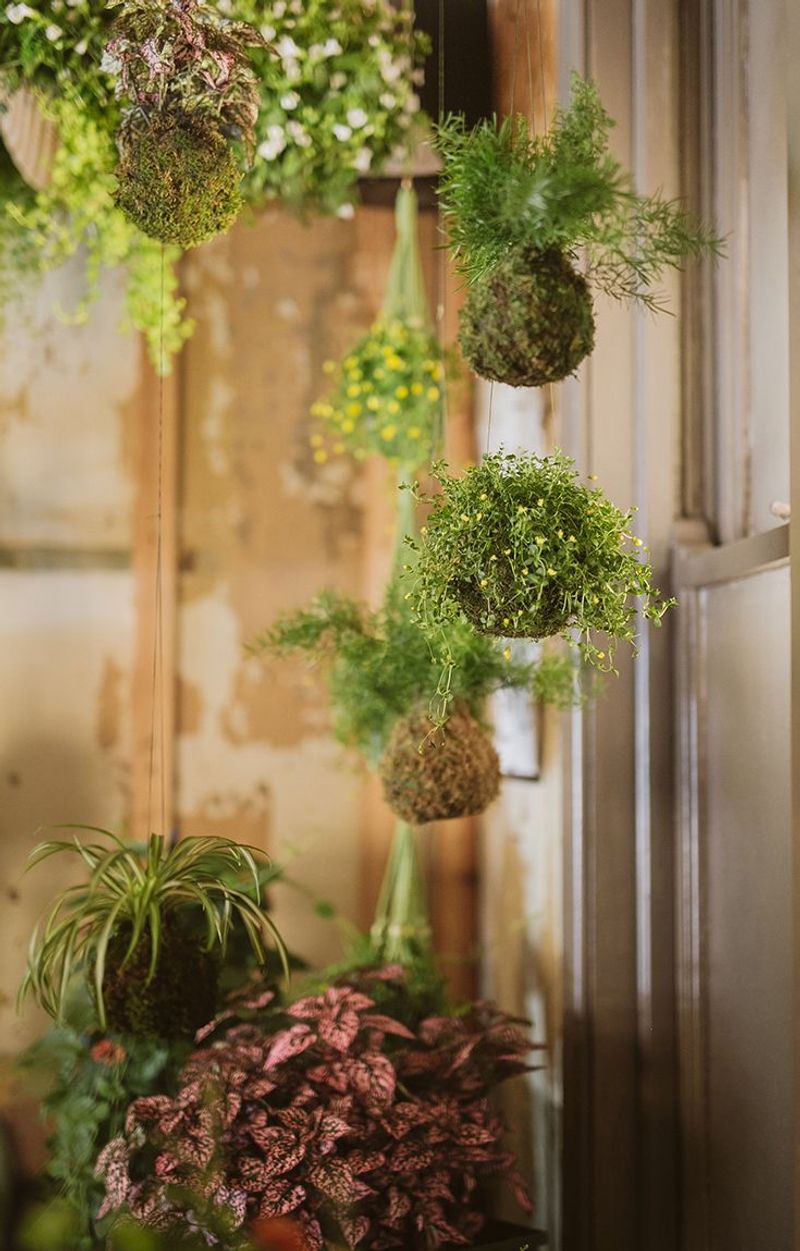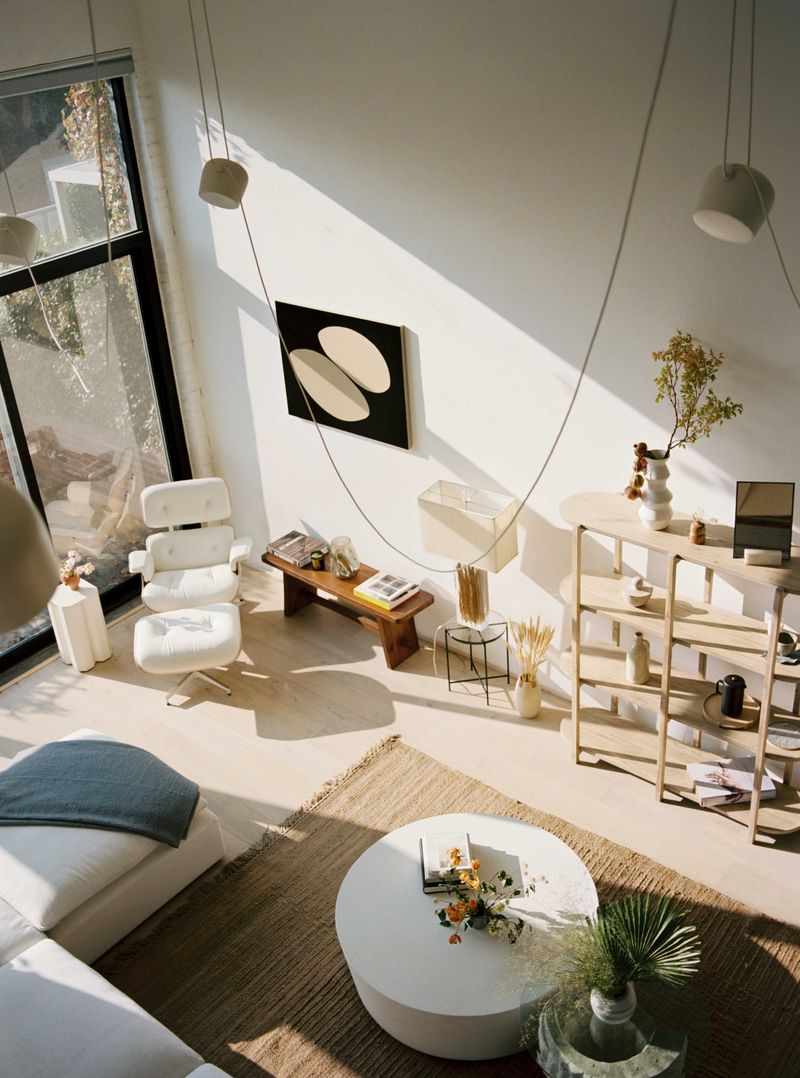If tranquility and elegance could be bottled, they might just pour out as Japanese minimalism. Infusing your home with the serene essence of Japan is more than just aesthetic – it’s a philosophy.
With each carefully chosen element, you invite harmony, balance, and a touch of Zen into your living space.
So, whether you’re a maximalist looking for a change or a lover of clean lines and mindful living, these 20 ways to add Japanese minimalism to your interiors will guide you on a journey to creating your own sanctuary of calm.
1. Shoji Screens
Embrace the art of subtle division with shoji screens. Imagine sunlight filtering gently through the translucent paper, casting soft shadows that dance with elegance. These screens do more than just separate spaces; they define them with grace, creating an ambiance that’s both functional and poetic.
Shoji screens are a testament to the beauty of simplicity, where less is undeniably more. Perfect for adding a touch of authentic Japanese charm to your home, they transform any interior into a peaceful retreat.
2. Tatami Mats
Step onto a tatami mat, and feel the world soften beneath your feet. Their natural texture invites you to slow down, breathe deeply, and embrace the simplicity of living. Crafted from woven straw, these mats are more than just flooring – they’re a foundation for mindful living.
Incorporating tatami mats into your home doesn’t just alter the look; it changes the way you interact with space. Their subtle scent and gentle touch evoke a sense of nostalgia and warmth, perfect for anyone looking to cultivate an atmosphere of tranquility and connection.
3. Ikebana Arrangements
Picture a single flower, nestled perfectly in a vase, embodying balance and beauty. That’s the heart of ikebana, the Japanese art of flower arrangement. Each stem is carefully chosen, each leaf thoughtfully placed, creating a living sculpture that celebrates nature’s fleeting elegance.
Unlike traditional bouquet styles, ikebana focuses on harmony, color, and form. It’s not just about decoration – it’s a mindful practice that connects you to the seasons and the quiet beauty of the world around you. Let ikebana add a touch of meditative calm to your interiors.
4. Fusuma Doors
Imagine doors that slide effortlessly, opening up possibilities rather than just rooms. Fusuma doors, with their artistic flair and functionality, offer a seamless blend of beauty and utility. Often adorned with delicate artwork, they transform spaces into canvases of tranquility.
These doors allow for flexible living areas, adapting to your needs while maintaining a minimalist aesthetic. Whether you’re creating a quiet corner or a larger gathering space, fusuma doors are the perfect way to incorporate Japanese minimalism without sacrificing practicality.
5. Zen Gardens
With a rake in hand, you can craft landscapes of tranquility right in your living room. Zen gardens, though small, hold the vastness of peace within their sandy confines. Arrange rocks, sift sand, and let your mind wander into calm reflection.
These gardens are not just decorative; they’re a practice in mindfulness, encouraging you to pause from the hustle and bustle of daily life. Whether placed on a desk or in a quiet corner, a Zen garden offers a space of serenity, perfect for meditation or simply unwinding.
6. Wabi-Sabi Decor
Embrace the beauty of imperfection with wabi-sabi decor. Picture a cracked vase, each flaw telling a story of resilience and age. In Japanese minimalism, wabi-sabi is a celebration of the imperfect, the transient, and the incomplete.
By incorporating natural materials and aged textures, you invite a sense of warmth and authenticity into your home. Each piece, with its unique history, adds character and depth, reminding you that beauty is often found in the most unexpected places.
7. Bonsai Trees
In the miniature world of bonsai trees, the grandeur of nature is captured in a single pot. Cultivating a bonsai is more than just gardening; it’s a meditation on patience and care. Each twist and turn of the branches tells a story of meticulous attention and artistic vision.
Bonsai trees bring a slice of the natural world indoors, serving as a living testament to the beauty of growth and change. They’re perfect companions for those seeking to infuse their spaces with a touch of serenity and an appreciation for nature’s artistry.
8. Tatami Rooms
If you’re seeking a space that nurtures calm and intentional living, a tatami room might be exactly what you need. These traditional Japanese spaces, defined by their soft, straw-matted floors, embrace simplicity not just in style but in spirit.
With minimal furniture and a focus on natural materials, they offer more than just visual appeal – they create an environment that encourages mindfulness and quiet reflection.
Whether used for meditation, tea ceremonies, or just a peaceful moment alone, tatami rooms are a gentle invitation to slow down and savor the stillness.
9. Japanese Soaking Tubs
Sinking into a deep wooden tub, you’re instantly wrapped in warmth and tranquility—that’s the magic of a Japanese soaking tub, or ofuro. Designed for seated soaking rather than sprawling, these tubs turn bathing into a mindful ritual.
Each soak becomes an opportunity to reflect, relax, and reconnect with yourself. The rich wood, compact design, and minimalist aesthetic channel the serene spirit of Japanese tradition.
By incorporating an ofuro into your space, you’re not just upgrading your bathroom – you’re creating a sanctuary where peace flows as freely as the water itself.
10. Calligraphy Art
Hang a piece of calligraphy art, and watch as a single brushstroke breathes life into your walls. Japanese calligraphy, or ‘shodo,’ is a dance of ink and paper, where each character conveys beauty and meaning.
This art form isn’t just for decoration; it’s an expression of culture and philosophy, reflecting the artist’s spirit and the harmony of the universe.
11. Kanso Design
With Kanso design, less truly becomes more. Imagine a space devoid of clutter, where every object has its purpose and place. Kanso, one of the key principles of Japanese aesthetics, emphasizes simplicity and utility.
By reducing excess and focusing on what matters, Kansō creates an environment that fosters clarity and calmness. This minimalist approach not only enhances the aesthetic appeal but also promotes a sense of well-being and order.
12. Stone Pathways
Step outside, and let your feet follow the gentle curve of a stone pathway. In Japanese gardens, these pathways are not just a means to an end; they’re an invitation to slow down and savor the journey.
Stone pathways blend seamlessly with nature, guiding you through landscapes of tranquility and beauty. Each step encourages mindfulness and reflection, offering a moment of peace amidst the chaos of life. Incorporate a stone pathway into your garden, and create your personal retreat of calm and contemplation.
13. Origami Decorations
Unfold the creativity of origami, and watch as simple paper transforms into intricate works of art. Origami decorations bring a whimsical yet sophisticated touch to any space, celebrating the beauty of craft and imagination.
With a few folds, you can invite a sense of playfulness and wonder into your home. These paper creations are more than just decor; they’re a nod to tradition and an exploration of form and function.
14. Bamboo Accents
Bamboo, with its graceful strength and natural beauty, adds a touch of elegance to any decor. Whether used in furniture or as decorative accents, bamboo embodies the principles of sustainability and aesthetics.
Its light, airy presence creates a sense of openness and tranquility, perfect for those seeking to connect with nature. Bamboo’s versatility and timeless appeal make it a favorite in Japanese minimalist interiors, offering a way to enhance your space with warmth and simplicity.
15. Engawa Spaces
Picture a space that blurs the line between inside and out, where you can sit and watch the world unfold. Engawa, the Japanese porch, offers a unique connection to nature, inviting contemplation and rest.
By incorporating an engawa into your design, you create a serene spot for relaxation and reflection, a true testament to the beauty of Japanese minimalism.
16. Low Furniture
Take a seat on low furniture, and you’ll find your perspective grounded, both literally and figuratively. Low tables, chairs, and beds open up a room, creating a sense of space and freedom.
In Japanese minimalism, low furniture encourages a closer connection to the earth, fostering a deeper sense of balance and peace.
This approach not only enhances the visual appeal but also promotes a more relaxed and informal atmosphere. Transform your living area with low furniture, and experience the harmony it brings to your home.
17. Noren Curtains
Hang a noren curtain in a doorway, and watch as it adds a touch of mystery and charm. These traditional fabric dividers are more than mere decor; they’re a symbol of hospitality and culture.
Noren curtains create a unique sense of separation while maintaining a connection between spaces. They’re perfect for adding a splash of color and texture to your interiors without overwhelming the minimalist aesthetic.
18. Japanese Tea Sets
Pour a cup of tea, and let the ritual transport you to a place of peace. Japanese tea sets, with their delicate craftsmanship and elegant design, are a celebration of tradition and mindfulness.
Incorporate a Japanese tea set into your daily routine, and experience the calming influence of this timeless practice. Let each sip be a reminder of the beauty and simplicity that Japanese minimalism brings to your life.
19. Kokedama
In the world of kokedama, plants find a new way to thrive. These moss ball gardens are a blend of art and horticulture, offering a unique, suspended greenery that’s perfect for minimalist spaces.
Kokedama brings a sense of whimsy and life to any room, with its roots wrapped snugly in moss. They’re easy to care for and make a striking visual statement, ideal for those who want to incorporate nature without clutter.
20. Natural Light
Let the sun be your decorator, casting its golden glow through wide-open windows. Natural light is the unsung hero of Japanese minimalism, illuminating spaces with warmth and vitality.
By maximizing natural light, you create an atmosphere of openness and tranquility. Large windows and open spaces invite the outside in, blurring the boundaries between indoors and outdoors.
Embrace natural light in your home, and watch as it enhances the simplicity and elegance of your interiors, making every corner feel alive and connected to nature.

